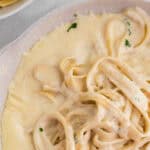Easy Quick stir-fry sauce known as Charlie
By
Suzanne rose
- Replies 8
I as well as 7 of my 8 daughters keep a jar of this stir fry sauce in the fridge
It keeps for weeks but honestly you will use it quickly.
It's the closest thing to restruant quality
Prep: 2minutes mins
All Purposes Chinese Stir Fry Sauce, a versatile base that makes a wonderfully glossy sauce for any stir fry, including stir fried noodles. store it in the fridge and it will be there when you need it. Just add water!
Makes 1 1/2 cups of sauce which is enough for around 12 servings.
Ingredients
- 1/2 cup light soy sauce (Note 1)
- 1/2 cup oyster sauce
- 1/4 cup Chinese wine (or dry sherry) (Note 5)
- 1/4 cup cornflour
- 1 tbsp sugar
- 2 tbsp sesame oil , toasted
- 1 tsp ground white pepper (I sometimes use 1 tbsp, I like the spiciness!)
Instructions
- Combine ingredients in a jar and shake to combine. Store in fridge and shake before use.
AMOUNT TO USE (NOTE 6):
- Stir Fry: I use 3 tbsp Stir Fry Sauce + 6 tbsp water to make a stir frying for 2 people using around 5 cups of uncooked ingredients (proteins + vegetables).
- Noodles: I use 3 tbsp of the Stir Fry sauce + 5 – 6 tbsp water to make a noodle stir fry for 2 people using around 7 cups of the combined stir fry uncooked (vegetables – packed, proteins + noodles – if using).
- By weight (Noodles & Stir Fry): Around 3 tbsp Stir Fry Sauce per 500g of combined ingredients (proteins + vegetables + noodles if using) plus 1/3 cup water.
Optional BASE FLAVOURINGS
- Garlic, minced or finely sliced
- Ginger, minced or finely sliced
- Fresh chillies, minced or finely sliced
ADDITIONAL FLAVOURING SUGGESTIONS
- Sriracha, Chilli Bean Paste or other Spicy addition
- Sweet chilli sauce
- Substitute the water with pineapple or orange juice
- Rice vinegar – for a touch of tartness
- Fresh cilantro / coriander leaves, or thai basil – for freshness
- Garlic or ordinary chives, chopped
- Pinch of Chinese five spice powder
Light soy sauce is lighter in colour that the more common dark soy sauce, but it is actually saltier. The main reason for using light soy sauce in this recipe is so the colour is not as dark. Substitute with all-purpose soy sauce.
I use Lee Kum Kee and Pearl River brands for the light soy sauce.
2. Noodles type – If using dried rather than fresh noodles, add a few extra tablespoons of water. The reason for this is that dried noodles, even after cooking them (usually just by covering them in hot water in a bowl), absorb more liquids than fresh noodles. So you need more liquid to have a saucier finish.
3. Vegan – To make this sauce vegan, substitute the oyster sauce with hoisin sauce. This gives the sauce a slight Chinese Five Spice Powder flavour which is thoroughly authentic!
4. Storage – This will last for weeks and weeks, depending on the expiry date of the ingredients you use. There is nothing in this that will go “off”, so just check the expiry date of the ingredients you use in this, at use that as a guide. I usually use mine in about 4 weeks, but it will definitely last longer.
If you have it in the fridge for ages untouched, then you will need a butter knife or something to mix up the cornstarch that will settle and harden in the bottom of the jar.
5. Chinese Cooking Wine (Shaosing / Shaoxing wine) – this plays an important part in giving this sauce depth of flavour so it tastes like the sauce you get at Chinese restaurants. Without it, the sauce will lack “something”. It’s a cooking wine sold at supermarkets in Australia in the Asian section but much cheaper at Asian stores – here are the bottles I use. It has a very long shelf life – years and years (and it’s used in 99% of the Chinese recipes on my site). Read more about Chinese cooking wine here.
Best substitute is dry sherry, followed by Mirin or Japanese cooking sake. If you use Mirin, leave out the sugar in the recipe.
However, for those who cannot have alcohol, apple juice or grape juice is the best substitute. Otherwise, chicken broth/stock, as a second fall back, with 2 teaspoons of white wine vinegar + 1/2 tsp sugar.
IMPORTANT: If you use a sub, then the shelf life of the sauce will be determined by the shelf life of what you use as the sub.
6. These quantities make stir fries that are nicely coated with sauce, but without pools of sauce. The stir fry is saucier than the noodles, so it soaks into the rice. With the noodles, the sauce clings to it really well so you don’t need pools of sauce. If you want more sauce, increase the amount of Stir Fry Sauce used with double the amount of water e.g. If you add 1 tbsp Stir Fry Sauce, add 2 tbsp water.
Last edited by a moderator:








